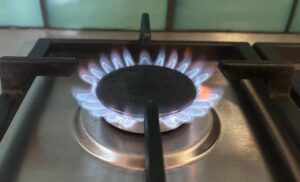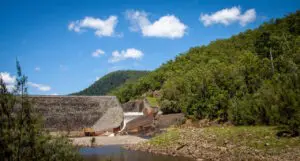A new report warns that the planned Scarborough Gas Field being developed by Woodside and BHP would result in an additional 1.6 billion tonnes of CO2 emissions over the lifetime of the project, an amount equivalent to the annual pollution of 15 new coal-fired power plants.
Published today by the Conservation Council of Western Australia and The Australia Institute, the report concludes that the Scarborough to Pluto LNG development planned off the Burrup Peninsula would be the most polluting fossil fuel project currently proposed in Australia.
The project will develop a portion of the Greater Scarborough gas fields which, in total, are estimated to hold 13.0 trillion cubic feet (Tcf) of dry gas.
Jointly developed between Woodside and BHP, the Scarborough Joint Venture will develop new offshore facilities and connect them by an approximately 430-kilomerre pipeline to a proposed expansion of the existing Pluto LNG onshore facility.
According to Woodside, current plans are to build between seven and nine high-rate gas wells tied back to a semi-submersible floating production unit.
Expected to deliver first LNG cargo in 2026 and reach Final Investment Decision (FID) in the second half of 2021, the Scarborough Joint Venture has already received several environmental approvals, despite ongoing legal proceedings.
However, according to the new report published, if the $AU16 billion project proceeds, it would leave an indelible stain on Australia’s climate record, and risk World Heritage Murujuga Aboriginal rock art in the process.
Of greatest concern is the fact that approvals to process the Scarborough gas field were provided by the WA Environmental Protection Agency (EPA) in 2019 without assessment of carbon pollution or other environmental impacts, including the damage to the globally significant 45,000+ year old Murujuga aboriginal rock art.
According to the report, ongoing legal actions in Western Australia’s Supreme Court are seeking to overturn approvals already issued to Woodside by the EPA after Woodside reportedly blocked efforts to have the project assessed.
Moreover, according to the report, Western Australia’s first Minister for Climate Action is being pushed by Woodside to sign off on further approvals.
“Not only does Scarborough fly in the face of global efforts to keep warming below 1.5 degrees, but the project risks destroying globally significant Murujuga Aboriginal rock art in what can only be described as repeating Juukan Gorge in slow motion,” said Mark Ogge, principal adviser at The Australia Institute.
In addition to the pollution the Scarborough gas project would create, the report identifies concerns from experts and traditional owners that gas emissions from LNG processing and other related industries are impacting the Murujuga Rock art on the Burrup peninsula, which is currently proposed for World Heritage Listing.
The report points to peer-reviewed scientific evidence that claims “the petroglyphs on Murujuga are being destroyed because acids formed from LNG processing and related industries are dissolving the outer surface layer (patina) into which significant images and elaborate symbols have been engraved.”
“The Murujuga Aboriginal rock art is already being destroyed due to acid gas emission from LNG projects,” claims Ogge. “It is extraordinary that in the wake of the Juukan Gorge destruction that this project would be approved without the impacts on this priceless cultural treasure even being assessed.”
If the Scarborough gas fields are developed as planned, the potential damage to the Murujuga petroglyphs would only increase, and eventually lead to their irreparable and permanent loss.
Of particular concern is the fact that documents revealed through Freedom of Information indicate that the Commonwealth agency responsible for the protection of National Heritage recognised the risks to the Murujuga Rock art from acid gas emissions from Woodside’s LNG processing operations on the Burrup.
When examining Woodside’s proposed Browse Basin development, the Department of Environment and Energy noted:
“The Department considers that impacts from emissions of NOx, C02 and volatile organic compounds (noxious emissions) are an indirect, adverse impact that the proposed action is likely to have on the national heritage values of the Dampier Archipelago National Heritage Place. The continuation of, and the change in composition of the noxious emissions may each have impacts on the petroglyphs by contributing to an acceleration in the weathering of the petroglyphs.”
Despite recognition of the potential damage, the report concludes that “there has been no assessment by either the State or Commonwealth Government of the significantly greater increases in acid gas emissions (and resultant damage to the Murujuga rock Art) that would inevitably result from the Scarborough to Pluto LNG expansion.”
“We have seen from what happened at Juukan Gorge that our community expects better when it comes to protection of our priceless and irreplaceable Aboriginal Heritage,” said Professor Carmen Lawrence, former WA Premier and Chair of the National Heritage Council.
“Many of the same circumstances apply to Woodside’s Scarborough development, and the Government has an opportunity to pause and reconsider before permanent damage is locked in. It is clear now that pollution from gas processing on the Burrup is having a significant effect on the Murujuga rock Art.
“Allowing further expansion of gas processing on this site will increase both the duration and severity of these impacts and this must be assessed carefully before any further decisions are made, not as an afterthought.”









